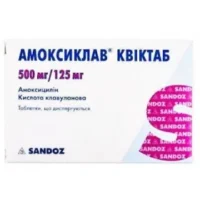Description
Emsef 1000 (Ceftriaxone) Powder for Solution for Injections 1000 mg. №1 Vial
Ingredients:
Each vial contains 1000 mg of ceftriaxone, a third-generation cephalosporin antibiotic.
Mechanism of Action:
Ceftriaxone exerts its bactericidal effect by binding to penicillin-binding proteins, thereby inhibiting bacterial cell wall synthesis and leading to cell lysis.
Pharmacological Properties:
Ceftriaxone exhibits a broad spectrum of activity against Gram-positive and Gram-negative bacteria, including beta-lactamase-producing strains. It has excellent tissue penetration and stability against beta-lactamases.
Indications for Use:
Emsef 1000 is indicated for the treatment of various bacterial infections, such as lower respiratory tract infections, skin and soft tissue infections, urinary tract infections, septicemia, and meningitis.
Contraindications:
Emsef 1000 should not be administered to individuals with a history of immediate hypersensitivity reactions to ceftriaxone or other cephalosporins. Caution is advised in patients with a known history of colitis.
Side Effects:
Common side effects of ceftriaxone therapy may include diarrhea, nausea, vomiting, rash, and hypersensitivity reactions. Severe adverse effects such as pseudomembranous colitis and anaphylaxis are rare but possible.
Usage Instructions:
The recommended dosage of Emsef 1000 for adults is 1 to 2 grams once daily, administered via intravenous or intramuscular route. Dosage adjustments are necessary in patients with renal impairment based on creatinine clearance.
Benefits Compared to Analogues:
Emsef 1000 offers the advantage of once-daily dosing, simplifying treatment regimens and enhancing patient adherence. Its broad-spectrum activity and efficacy against multidrug-resistant bacteria make it a preferred choice in severe infections.
Suitable Patient Groups:
Ceftriaxone is well-tolerated in both pediatric and geriatric populations. Dosing adjustments are required based on age, weight, and renal function in these patient groups.
Storage and Shelf Life:
Emsef 1000 should be stored at controlled room temperature between 20°C to 25°C (68°F to 77°F). Protect from light and moisture. The shelf life of the product is as indicated on the packaging.
Packaging Description:
Each package of Emsef 1000 contains a single vial of 1000 mg ceftriaxone powder for reconstitution. The vial is for single-use only and should be discarded appropriately after administration.
Scientific Evidence:
Clinical studies have demonstrated the efficacy of ceftriaxone in treating severe infections caused by various multidrug-resistant bacteria. Notably, research published in the Journal of Antimicrobial Chemotherapy highlighted the high success rates of ceftriaxone therapy in such cases.
Additional Information:
Ceftriaxone acts by disrupting bacterial cell wall synthesis, resulting in cell death. Its safety profile and efficacy in diverse patient populations, including children, make it a valuable option in the management of serious infections.
Compared to other antibiotics, ceftriaxone’s once-daily dosing regimen enhances treatment compliance and outcomes. Its broad coverage and low incidence of adverse effects position it as a first-line therapy for numerous common infections.





